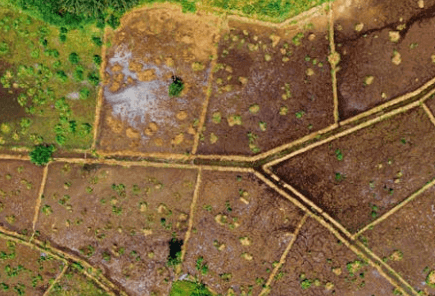Subdividing land might seem complex, but it opens up incredible opportunities for property owners. Did you know the process involves breaking a large parcel into two or more smaller lots with individual titles, making it easier to sell or develop? By understanding the steps on how to subdivide land, you can turn your property into a highly profitable asset. Steve Daria and Joleigh, renowned real estate investors and land buyers for cash, have helped many property owners in situations just like yours. From evaluating planning requirements to obtaining council approvals, they simplify every step for a smooth, stress-free experience. Whether you’re looking to maximize investment returns or sell part of your property, subdividing can make it possible. Knowing the right steps on how to subdivide land can save you time, money, and effort. Contact Steve Daria and Joleigh today to book your free discussion and get started on unlocking your property’s full potential!
Key Points
- Understand the Planning Requirements: Research if your property can be subdivided based on your area’s zoning laws and planning regulations. Consulting with a town planner or local council can help you understand the guidelines and what is possible for your land.
- Conduct Planning and Due Diligence: Engage professionals such as land surveyors, architects, and property lawyers to assess the feasibility of the subdivision. This step ensures you comply with all legal obligations and identify any restrictions or covenants linked to your land.
- Apply for Necessary Permit: Submit a subdivision application to your local council or relevant authority. This involves creating a proposed subdivision plan, which may require surveys, environmental assessments, and formal permits before you can move forward.
- Obtain Council Approval: After applying, the council must review and certify your proposed subdivision plan. They will state compliance once all conditions and requirements are met, allowing you to create individual lots.
- Register New Titles: Once the subdivision is approved and certified, submit the final plans to the land registry to create new titles for each lot. These titles enable you to sell or develop the subdivided parcels of land independently.
What does it mean to subdivide land?
Subdividing land means breaking a larger piece of land into smaller lots, each with its separate title.
This allows the landowner to sell or develop each lot individually, creating opportunities for profit or new projects.
People choose to subdivide for many reasons, such as maximizing the value of their property, generating more investment opportunities, or making it easier to sell part of the land while keeping the rest.
The process starts with understanding local zoning laws and planning requirements to determine if the land qualifies for subdivision.

It typically involves working with professionals such as land surveyors and town planners to assess feasibility and create a detailed plan.
After this, you need to apply for permits and gain approval from the local council.
Once approved, the new lots are given separate titles, making them ready for sale or development.
Learning the steps on how to subdivide land ensures a smoother process and helps landowners unlock their property’s full potential.
Get Started: Get Your Cash Offer Below…
We are direct land buyers. There are no commissions or fees and no obligation whatsoever. Start below by sharing where your property is and where we can send your offer…
Why should I consider subdividing my land?
Subdividing your land can be an excellent way to unlock its full potential.
Splitting a large property into smaller lots can increase its overall value, making it more attractive to buyers or investors.
It also provides flexibility, allowing you to sell part of the land while keeping a portion for your use.
Subdivision can create exciting investment opportunities, whether you develop the lots, lease them, or sell them individually.
It’s also a great way to make unused land more productive, transforming an underutilized space into something profitable.
Additionally, subdivided land appeals to a wider range of buyers, as smaller lots are typically more affordable and accessible.
The steps on how to subdivide land ensure you understand the process and comply with legal requirements, making it easier to achieve your goals.
With careful planning and the right experts to guide you, subdividing your land can lead to rewarding outcomes.
Who should I consult before starting the subdivision process?
- Land Surveyor: A land surveyor is essential for accurately measuring your property and determining its boundaries. They also create detailed maps and reports that are crucial for determining the steps to subdivide land.
- Town Planner: A town planner helps you understand local zoning laws and planning requirements. Their expertise ensures your subdivision plans comply with legal regulations and increases the chance of approval.
- Property Lawyer: A property lawyer protects your interests by reviewing contracts, permits, and legal documents. They ensure the subdivision process follows the law and help you avoid potential legal pitfalls.
- Real Estate Agent: An agent can offer insights into the market demand for subdivided lots. They can guide you on pricing and strategies to maximize the value of your land after the subdivision.
- Civil Engineer: A civil engineer assesses the land’s infrastructure needs, such as roads, utilities, and drainage. Their input is important to ensure the subdivided lots are functional and meet local standards.

What costs should I expect when subdividing my land?
Subdividing your land can come with various costs that you should plan for in advance.
One major expense is hiring a land surveyor to measure your property and create detailed plans, which are essential for the process.
You may also need to pay application fees to the local government or council to review and approve your subdivision plans.
Legal fees are another factor, as a property lawyer will help you deal with contracts, permits, and other legal documents.
Additionally, there are costs for infrastructure development, such as building roads, installing utilities, or ensuring proper drainage for the new lots.
You might also have to pay for consultations with professionals like town planners and engineers to ensure your plans meet all zoning and building regulations.
These expenses can vary depending on location, land size, and subdivision complexity.
Understanding the steps on how to subdivide land can help you manage these costs and budget effectively for a successful outcome.
What factors influence whether my land can be subdivided?
1. Zoning Laws
Zoning laws determine how land in your area can be used and play a big role in whether subdivision is allowed.
Some zones are strictly for single-family homes, while others allow for multiple lots or specific land uses.
Checking zoning laws is one of the first steps on how to subdivide land and ensures your plans align with local regulations.
2. Land Size and Shape
The size and shape of your land must meet local requirements for subdivision.
Many councils have a minimum lot size rule, and irregularly shaped properties may face challenges in dividing space evenly.
Larger, regular-shaped parcels are usually easier to subdivide, and a surveyor can help determine if your property meets the standards.
3. Access to Utilities
Subdivided lots must typically have access to utilities like water, sewer, and electricity.
If utilities aren’t available, you might need to invest in extending existing systems or installing new ones, which can add to the cost.
Ensuring access to these essentials is critical for the subdivision to be approved.
4. Environmental Considerations
Environmental factors like flood zones, protected species, or special land features can influence subdivision approval.
You may need environmental impact assessments to show that your project won’t harm the surrounding area.
These factors can limit development on certain portions of your land.
5. Neighborhood Plans and Requirements
Local neighborhood or community plans often dictate the type of development allowed in the area.
Your subdivision plans must fit within the community’s overall vision, whether that involves housing styles, density, or land use regulations.
Consulting with a town planner can help you meet these requirements and make the process smoother.
How do I apply for subdivision approval?
You’ll need to follow a few important steps to apply for subdivision approval.
First, gather all relevant documents, such as property titles and land survey reports, to ensure your application is complete.
Consulting with professionals like land surveyors, town planners, and property lawyers is crucial, as they can help you navigate the legal and technical steps of the process.
You’ll also need to review local zoning laws and neighborhood plans to ensure your proposal meets the area’s requirements.
Once you have a clear plan, submit your application to your local council or planning authority for review.
This process can involve fees and require attending meetings or requesting additional documents.
Understanding the steps on how to subdivide land can simplify the process and help you avoid costly mistakes.
If you’re feeling overwhelmed or ready to sell, consider reaching out to Steve Daria and Joleigh, seasoned real estate investors and land buyers, for cash.
They can provide personalized advice and offer a fast, no-hassle solution for your property needs.
**NOTICE: Please note that the content presented in this post is intended solely for informational and educational purposes. It should not be construed as legal or financial advice or relied upon as a replacement for consultation with a qualified attorney or CPA. For specific guidance on legal or financial matters, readers are encouraged to seek professional assistance from an attorney, CPA, or other appropriate professional regarding the subject matter.
